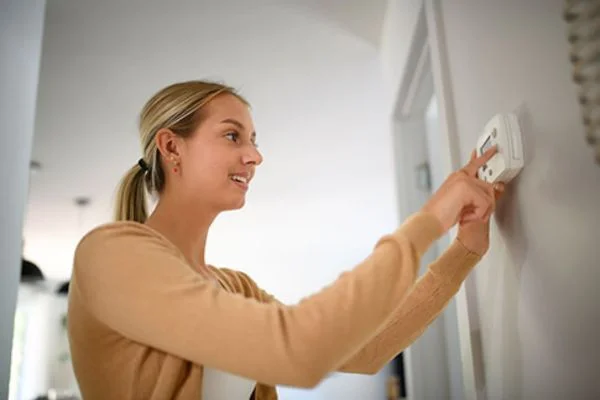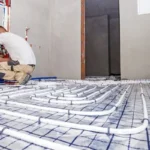Due to their energy efficiency and eco-friendliness, in-floor heating is becoming increasingly popular among homeowners. Heat is distributed more evenly with in-floor heating systems than with traditional heating systems that heat the air. Many homeowners struggle to turn on their in-floor heating system, especially if they’re new to it. Don’t worry if you’re one of them. This blog post shows you how to turn on in floor heating system step-by-step.
To turn on the floor heating system, Just simply turn on the thermostat, then check the boiler. Next you have to open the zone valve after that check the floor sensor. And lastly monitor the system. If still you need more details then continue to read.
Do You Have To Turn On Underfloor Heating?
Installing in-floor heating is a great option if you have a big, open space to heat. If you have a smaller area or just want the convenience of turning your system off when you’re not using it, underfloor heating may not be right for you.
Underfloor heating uses less energy than other forms of heating, so it’s great for heating big spaces. Installation is more complicated than other types of flooring and requires drilling holes in your floor.
Hire professionals if you’re uncomfortable with this type of work or don’t have the time or expertise to install floor heating yourself.
Also Read: How To Add Water To In Floor Heating System?
How To Turn On In Floor Heating System | Step By Step Procedure

Step 1: Turn on the Thermostat
It would be best to turn on the thermostat before you can turn on the in-floor heating. Find the thermostat and turn it on.
The thermostat keeps the room warm and comfortable by regulating the in-floor heating temperature. Setting the desired temperature and heating mode on your thermostat might be necessary.
Step 2: Check the Boiler or Heat Pump
Switch on the thermostat, then check the boiler or heat pump. Flowing water through tubes in your flooring is heated by a boiler or heat pump.
Turn on the boiler or heat pump, and ensure you have enough hot water to heat your house. If your system uses a heat pump, ensure it’s set to the right outside temperature.
Step 3: Open the Zone Valve
Zone valves on your in-floor heating system usually control how much hot water goes to each zone. Check the zone valve and make sure it’s open. Hot water won’t flow through the tubes in your flooring if the zone valve is closed.
Step 4: Check the Floor Sensors
Floor sensors in in-floor heating systems also control the temperature of the flooring. Make sure the floor sensors are working and not covered or obstructed.
If the floor sensors don’t work, the system won’t be able to regulate the temperature of the flooring, causing uneven heating or no heating at all.
Step 5: Monitor the System
Check your in-floor heating system for a while after turning it on to make sure it’s working. Check the air temperature and the flooring to ensure they’re warm enough.
To ensure everything is working right, double-check the previous steps if there are any problems, like uneven heat or no heat.
Also Read: How Much Does A Radiant Floor Heating System Cost?
How Do You Use Underfloor Heating For The First Time?
Winter is coming, and you might wonder how to use underfloor heating for the first time if you’re considering switching from traditional heating methods.
You can keep your home warm during the colder months with underfloor heating. Here’s a beginner’s guide to underfloor heating, whether you’re installing a new system or getting started with a new house.
1. Check your system before use
Before turning on your underfloor heating for the first time:
- Ensure everything works.
- Ensure the thermostat is set to a comfortable temperature and the system has no leaks or airlocks.
- Check all the rooms to ensure they’re all warming up evenly by turning on the heating for an hour or two.
2. Get your floors ready
You’ll get the best results with underfloor heating if your floors aren’t cluttered. Remove anything that might block heat from reaching the surface, like furniture, rugs, or mats. Ensure you clean your floors regularly to prevent buildup that can hinder heat transfer.
3. Optimize your energy use
Since it’s energy-efficient, you can save money on your heating bills with underfloor heating. Ensure your thermostat isn’t set higher than 20-21 degrees Celsius to get the most out of your system. By doing this, you’ll keep your home comfortable and make sure your system runs well.
4. Different heating methods for different rooms
Every room in your house has different heating needs, so you should know what works best for each one. You might want a higher temperature in a bathroom than a living room, so adjust the settings accordingly. You might be able to set different temperatures in each room depending on your system.
5. Keep it maintained
For underfloor heating to work efficiently, it needs maintenance. You can catch problems with your underfloor heating system by cleaning and inspecting it regularly.
Ensure you have your system inspected and repaired if you notice any leaks, cracks, or other issues.
Also Read: How Long Do Radiant Floor Heating Systems Last?
Bottom Line:
You can heat your house more efficiently and eco-friendly with in-floor heating systems. Turning on an in-floor heating system may seem intimidating initially, but following these simple steps of how to turn on in floor heating system will ensure that your system is working right and keeping you warm all winter.



